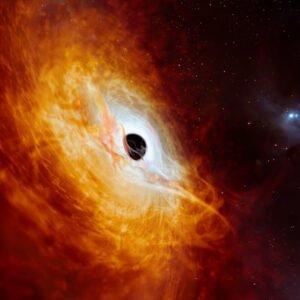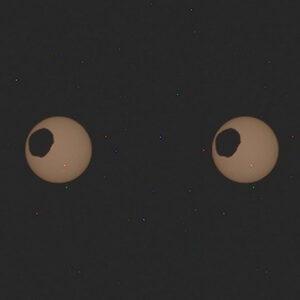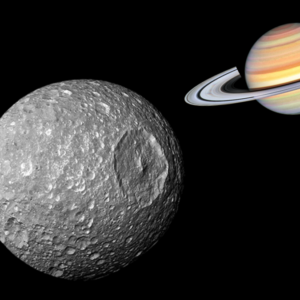
In 1977, a symbolic gesture was made when humanity launched a golden record into space, encapsulating a snapshot of life on Earth. Now, decades later, another poignant endeavor is underway as scientists prepare to send a modern-day “message in a bottle” into the cosmos, this time aimed at potential extraterrestrial beings.
Scheduled for launch in October 2024, NASA’s Europa Clipper spacecraft will embark on a journey towards Jupiter’s enigmatic moon, Europa, carrying with it a carefully crafted communication from Earth. At the heart of this transmission is an inscribed plaque, bearing a poignant blend of human creativity, scientific inquiry, and cultural diversity.
Featured prominently on one side of the plaque is an engraving of the esteemed U.S. Poet Laureate Ada Limón’s handwritten work, In Praise of Mystery: A Poem for Europa, accompanied by an evocative image of a bottle adrift in the vastness of the ocean. Nestled within this imagery lies a silicon microchip adorned with over 2.6 million names contributed by individuals worldwide, symbolizing humanity’s collective desire to reach out across the cosmos.
Above Limón’s poem, the plaque displays a meticulous engraving of the Drake Equation, a seminal mathematical formula devised by astronomer Frank Drake in 1961 to contemplate the likelihood of encountering advanced civilizations beyond our planet. Adjacent to the poem stands a tribute to Ron Greeley, a pioneer in planetary science whose visionary efforts paved the way for the Europa Clipper mission. Between these elements lies a visual representation of the radio frequencies employed in our ongoing quest to decipher interstellar messages, illustrating humanity’s persistent exploration of the cosmos.
On the reverse side of the plaque, linguists have curated recordings of the word “water” spoken in 103 languages, spanning diverse linguistic families worldwide. These audio recordings have been transformed into visual waveforms and meticulously etched onto the surface of the plate, serving as a universal symbol of life and an invitation for cosmic dialogue.
In essence, this symbolic gesture encapsulates humanity’s innate curiosity, creativity, and quest for connection, as we extend a hand of friendship across the vast expanse of space, in the hope of one day engaging in meaningful communication with beings beyond our own world.

Europa presents compelling evidence of an expansive ocean lurking beneath its icy facade, boasting a water volume surpassing that of all Earth’s oceans combined. This assertion underscores the profound significance of the chosen terminology.
Crafted from tantalum, a metal with remarkable properties, and measuring approximately 7 by 11 inches (18 by 28 centimeters), this artifact represents NASA’s latest endeavor to communicate with the cosmos.
The Voyager Golden Records epitomize humanity’s attempt to reach out to potential extraterrestrial beings. Encased within the Voyager spacecraft launched in 1977, these twin phonograph records serve as a time capsule of Earth’s rich tapestry of life and culture, carefully curated to convey the diversity and essence of our planet to any intelligent entities that may encounter them beyond our solar system.]
During the same era, the NASA Pioneer spacecraft carried a different form of communication: gold-anodized aluminum plaques adorned with depictions of nude human figures. These representations were meticulously crafted to present a universalized image of humanity, derived from an amalgamation of countless facial and bodily features, serving as a visual introduction to our species for potential extraterrestrial discoverers.

The plaque was adorned with various symbols meticulously crafted to convey information about the spacecraft’s origin, including a comprehensive map facilitating the location of Earth by utilizing radio waves emitted by pulsars, ensuring that regardless of its discovery location within the galaxy, the plaque would serve its purpose.
Scheduled for liftoff from the Kennedy Space Center in Florida, the Europa Clipper is slated to embark on its journey to the Jupiter system in 2030, where it will undertake approximately 50 flybys of Jupiter’s moon, Europa.
At the heart of this mission lies a pivotal scientific objective: to ascertain the presence of potentially habitable environments beneath Europa’s icy surface. To achieve this, the mission is structured around three primary scientific aims: gauging the thickness of Europa’s icy crust and its interactions with the subsurface ocean, scrutinizing its composition, and delving into its geological features.
Through its comprehensive exploration of Europa, the mission aims to furnish scientists with invaluable insights into the astrobiological prospects of worlds beyond our own, thereby enhancing our understanding of potentially habitable environments in the cosmos.
“The content and design of Europa Clipper’s vault plate are swimming with meaning. The plate combines the best humanity has to offer across the universe: science, technology, education, art, and math,” Lori Glaze, director of the Planetary Science Division at NASA Headquarters in Washington, shared in a recent statement.
“The message of connection through water, essential for all forms of life as we know it, perfectly illustrates Earth’s tie to this mysterious ocean world we are setting out to explore.”
“We’ve packed a lot of thought and inspiration into this plate design, as we have into this mission itself. It’s been a decades-long journey, and we can’t wait to see what Europa Clipper shows us at this water world,” Project Scientist Robert Pappalardo, of NASA’s Jet Propulsion Laboratory in Southern California, said.
What are your thoughts? Please comment below and share this news!
True Activist / Report a typo


